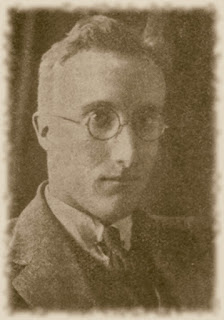Don Harlow's Esperanto Book
I did not fully appreciate Don Harlow when I met him at the office of the Esperanto League for North America in the San Francisco Bay area towards the end of the 1980s. I surmise this was because I was extremely irritated by the American Esperanto movement at the time. I remember that he published a book in English in Esperanto, but I never saw it until I consulted his indispensable web site of Esperanto literature many years later:
Literaturo
en Esperanto (Don Harlow)
Literature in Esperanto (Don Harlow) [ligoj al literaturaj revuoj, recenzoj, k.a. / links to literary magazines, reviews, et al]Even then, I did not pay sufficient attention to his book. Reading over several chapters in the past week, I finally realized what a great background source it is for English speakers/readers who want to learn more about the Esperanto phenomenon. While the whole book is worth reading, I want to single out several chapters of current interest.
- Chapter 7: History in Fine ... A short introduction to the history of the Esperanto movement
- Chapter 9: The Literary Scene ... An introduction to the history of Esperanto literature
- Chapter 11: The Inner Idea ... More than just a language
- Appendix 2: Esperanto and Science-Fiction ... Esperanto in science-fiction and science-fiction in Esperanto (Don HARLOW)
- Appendix 4: Some Worthwhile Reading ... Books in and about Esperanto
Important here I think is conveying the texture of the Esperanto world as a culture-forming phenomenon. Ultimately, this is far richer approach than kindergarten-level propaganda. That is, convey Esperanto as a living language, not just advertise how it is the interminably procrastinated solution to the world language problem.
There are a few tidbits on the various cultural-literary positions of prominent Esperantists. How many places can you read in English the divergent postures of Esperanto's two most influential cultural figures in my life span, the Hungarian Kálmán Kalocsay and the Scot William Auld? Kalocsay is more aloof than his fellow Hungarian literary pioneer Julio Baghy, and is primarily interested in literature, valuing literary translation highest. Kalocsay doesn't believe in Esperanto culture outside of literature, whereas Auld does.
Harlow pretty much follows the position of Auld and others, citing the many cultural particularities of the Esperanto world, embodied in its in-group expressions. But I claim that this proves Esperanto is a subculture. As to what kind of a subculture it is, we come to the question of the "interna ideo" (internal idea), i.e. that well-known moral idealism that is said to underlie the Esperanto movement. I think Harlow is right to suggest that the internal idea expresses the emotional tie to the language that allowed Esperantists in former times to endure, survive, and surmount hardship, ridicule, persecution, and eventually mass murder. Nevertheless, to simply characterize the Esperanto community past or present in this way is to mistake ideology for reality. Elsewhere Auld emphasizes the emotional tie to the language. I agree that this is an essential part of the explanation for whatever cohesion can be found among Esperantists, but I think that this language loyalty is more variegated and its motivation often less obvious than what the prevailing ideology claims.
Perhaps the best and most effective remedy at hand is to tell as rich a story as possible, about Esperanto as a living language, which could work wonders in the public mind that all the cookie cutter promotional literature in the world could not. And Harlow has made a valuable contribution in this direction.











